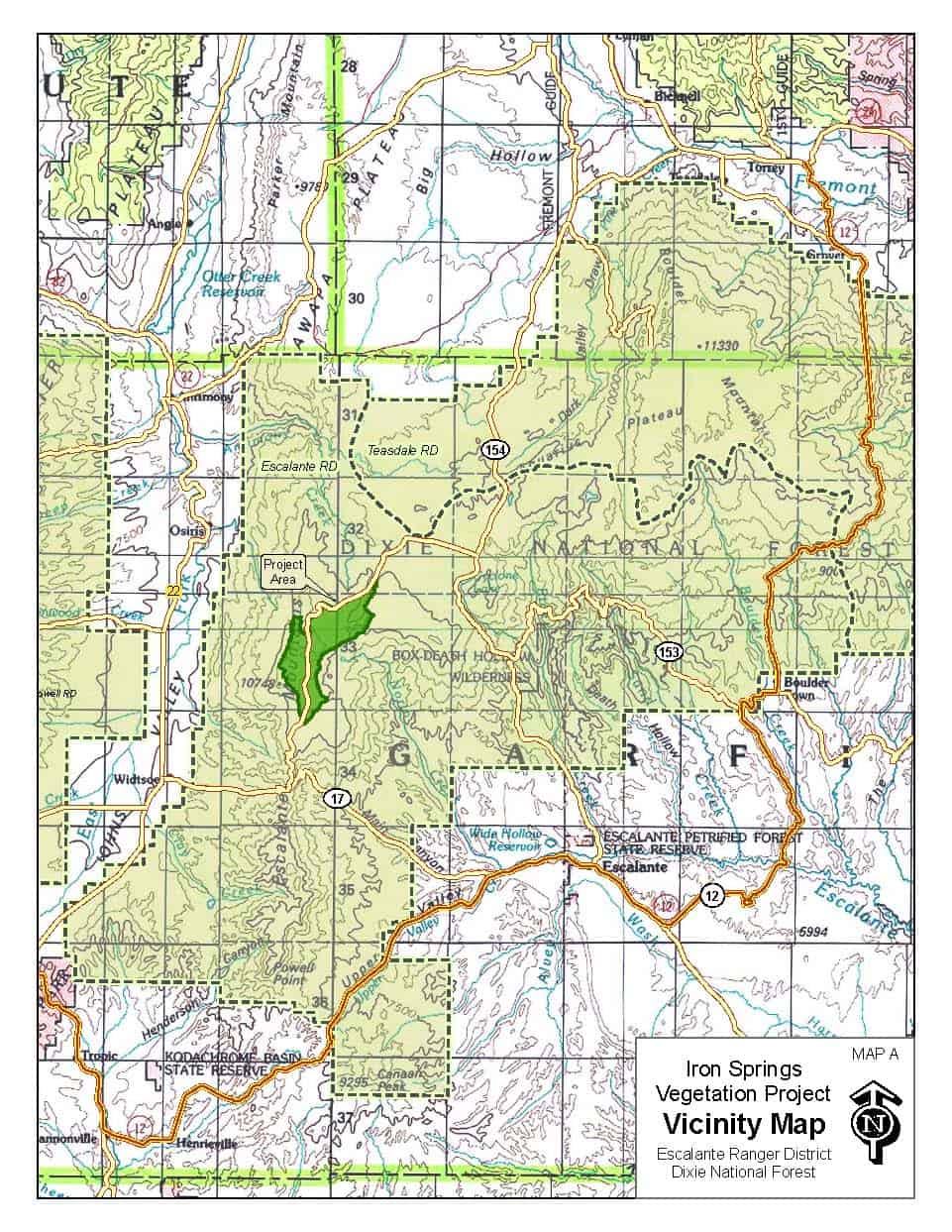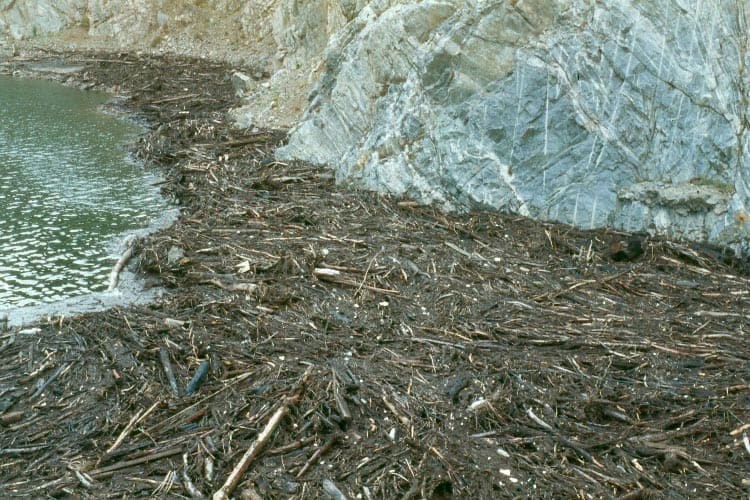Well, the latest development via the in-depth reporting of Pete Aleshire with the Payson Roundup in an article yesterday titled, “Forest Contract Bombshell.” Below are extensive snips from that article: [Note: emphasis added – mk]
Amid fresh furor, the U.S. Forest Service is considering letting a troubled timber company transfer the biggest forest restoration project in history.
The Forest Service announced on Monday that it has received a request from Pioneer Forest Products to transfer the 10-year, Four Forest Restoration Initiative (4FRI) contract to thin 300,000 acres in Northern Arizona to another, unnamed company.
“We are in the process of reviewing the application,” said Cathie Schmidtlin, media officer for the Southwest Region of the U.S. Forest Service, “to determine whether the transfer of assets is in the best interest of the government. If we determine it is not, the contract would stay with Pioneer. If it is determined to be in the best interest of the government, then the contract liability would transfer to the new owner, who would be contractually obligated to carry out the terms and conditions of the 4FRI contract.”….
At least one of the key groups that helped develop the 4FRI plan immediately responded to the announcement by calling for an inspector general’s investigation of the “potential irregularities” in the award of the contract.
“Many of us saw this one coming right from the start. Pioneer’s business plan read like a fantasy novel,” said Todd Schulke, with the Center for Biological Diversity, which helped develop 4FRI in collaboration with representatives of the timber industry, forest health researchers and local officials like Gila County Supervisor Tommie Martin. “But the Forest Service chose Pioneer despite having more realistic options. Either Pioneer misled the agency about its financial viability or the Forest Service chose to look the other way when there were serious questions. Why?”
Gila County Supervisor Tommie Martin said, “this could be the best thing that has happened to 4FRI — or it could be abysmal business as usual. Anyone who has the financial backing to buy this contract, the willingness to ‘take on’ the whole social functioning/disfunctioning that has grown around it and the desire to fulfill it definitely has my attention … and my respect if they can actually pull it off.”….
The Forest Service awarded the contract to Pioneer more than a year ago. The contract originally required Pioneer to thin about 15,000 acres in 2013 and 30,000 acres annually after that. The plan called for feeding those small-diameter trees into new mills in Winslow to produce biodiesel fuel and a type of “finger-jointed” furniture.
Several months ago, the Forest Service modified the terms the contract so that Pioneer only had to thin 1,000 acres in the next 18 months, amid reports that the company was having trouble getting financing for its proposed mills in Winslow.
The Forest Service statement released on Monday said “we cannot disclose the names of the potential new owner as this information is confidential while the proposed agreement is under review. The first task order of the contract, the Ranch task order located on the Apache-Sitgreaves National Forests is progressing satisfactorily and expected to be completed ahead of schedule.”…..
The stakeholders generally expected Berlioux Arizona Forest Restoration Products (AZFRP) to win the bid for the contract, since he had helped develop the approach behind 4FRI.
Instead, the Forest Service’s contract review office in Albuquerque awarded the contract to Pioneer Forest Products. One of the principals in the company was Marlin Johnston, who was a longtime Forest Service official who formerly ran the agency’s regional timber harvest office. In that post, he battled demands of environmentalists that the Forest Service quit cutting the remaining old-growth, fire-resistant trees.
Supporters of the 4FRI approach, like Supervisor Martin, questioned the award of the contract to Pioneer. She noted that Berlioux had not only offered to pay more money to the Forest Service for the contract, but had also agreed to monitor whether the thinning projects had the intended effects on tree growth, fire patterns and wildlife.
Moreover, Martin and others questioned Pioneer’s plan to compete with overseas markets in making finger-jointed furniture and use branches and slash to make diesel fuel, although previous efforts had failed.
By contrast, Berlioux proposed using the trees to make Oriented Strand Board — a sort of high-tech plywood that currently represents a $2 billion industry. Berlioux ran Europe’s first OSB factory.
Moreover, Pioneer principal owner Herman Hauck, 84, hasn’t operated a timber company or mill since Hauck Mill Work Company went bankrupt in 1969, according to an investigation by freelance writer and radio reporter Claudine LoMonaco, published in The Santa Fe Reporter, an alternative weekly. She had prepared a story on Pioneer’s dubious background for the public radio station in Flagstaff, but station officials killed the story.
The Forest Service contracting office declined to release many key details of Pioneer’s proposal and has never explained why it awarded the contract to the company that offered to pay the least.
Forest Service officials on Monday remained tight-lipped. In an e-mail to the Roundup accompanying the release Schmidlin said “this is all the information I’m able to provide at this time. The Forest Service will gladly share additional information in the near future, when the review process is completed. I don’t know how long the process will take.”
The swirl of questions about the contracts have forced the very people who developed the 4FRI approach to become increasingly vocal critics of the Forest Service’s implementation.
Martin, in an e-mail exchange on Monday, said she hopes the Forest Service will now seek expert, outside help. “The FS track record on the business side of this contract conversation has been so poor that unless they get ‘outside’ help evaluating the situation, the proposal and bringing business science to bear — I’m skeptical of the outcome … even knowing that a blind squirrel finds a nut once in a while!”
Moreover, she said “for me there is still the whole social agreement concerning big tree/old tree retention that was agreed upon by the counties, enviros, industry and others that the FS have completely thrown out the window and claim that us wanting to leave them all ‘is not good science.’ Nonsense!”
She said old-growth trees constitute just 3 percent of the trees in the ponderosa pine forest of Northern Arizona, even though the Forest Service management plan calls for increasing that tally to 20 percent. “For instance, the 33,000-acre Rim Lakes thinning portion of the 4FRI proposal by Heber has only an average less than one old tree per acre to start with!”
She said she hopes the Forest Service will now agree to leave virtually all of the trees larger than 16 inches in diameter. “We’re asking that they leave ALL the big/old trees (with few exceptions) — get rid of all the dog hair thickets and get ahead of the fire danger curve — and then go back to the drawing board and see if there needs to be more mosaic, more age/structure classifications, etc. within the treated area. They claim their science shows restoration occurs faster/better with some of the old growth gone — again I say nonsense! First let them show me where they have restored a forest — ANYWHERE — and then we’ll talk about it.”
Schulke made the same point. The Center for Biological Diversity has battled the Forest Service for years attempting to prevent the harvest of old-growth trees in an effort to save endangered, old-growth dependent species like the Mexican spotted owl and the Northern goshawk. But the group promised to go to court to support 4FRI if the Forest Service agreed to leave the remaining old-growth trees.
“Ignoring the collaborative agreement was an outright breach of the social license that enabled 4FRI in the first place,” said Schulke. “Large trees are not only critically important to the survival of an array of endangered and threatened species, they’re also more fire resistant — they help to reduce the risk of catastrophic fires. We fully support 4FRI. But the Forest Service bungling has put communities at risk from the fire unnecessarily. It’s time to demand action.”



